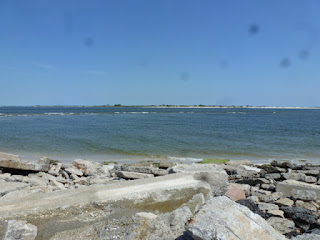Yesterday I answered my own question by taking a ride. As I often do, I zigzagged through some neighborhoods in Queens and Brooklyn before ending up in Coney Island. As the day was warm and sunny, and the wind of the past few days had all but died down, people were out: cycling, walking with themselves, canes, strollers, dogs and their friends, lovers, spouses and children. And although yesterday was officially a holiday, there was, on some streets, nearly as much traffic as on a normal weekday. People who didn't have to go to work simply wanted to get out, and I couldn't blame them.
It seemed, somehow, that the bike I chose to ride influenced the ride itself. Because the wind was nearly calm, in contrast to the previous few days, I felt like taking a spin on Tosca, my Mercian fixed-gear bike. And, while I didn't plan my route beforehand--in fact, I thought no further ahead than the next traffic light throughout my ride--I think I stuck to a flat route in part because I couldn't shift gears.
My ride--about 70 kilometers in total--was very nice, except for one thing:
At Prospect Park, I took a detour (if you can call anything on a ride like the one I took yesterday a detour) onto some streets I know but hadn't seen in a while. Hal Ruzal, the former partner and mecahnic/wheelbuilder par excellence of Bicycle Habitat--and the one who introduced me to Mercians and a few interesting bands--moved out of the house in the photo two and a half years ago. I've joked that he "got out of Dodge": the pandemic struck just a couple of months after he left. He's now living in another part of the country that, while affected by COVID (where wasn't?), didn't suffer from lockdowns or other ravages were we experienced here in New York.
When I texted that photo, and a couple of others, to Hal, he seemed more saddened by the generic townhouse-like building constructed across the street from his old house, and by the fact that the house next door is vacant and up for sale. "I hope the lady who owned it didn't die," he said.
My message was more evidence, to him, that the city of our youth no longer exists. I would agree, and sometimes I mourn the loss of it, but there is still much I enjoy--like the bike ride I took yesterday.





























